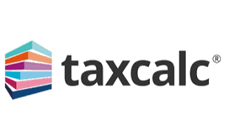Proof of employment expenses now required
HMRC now insists on evidence of employee expenses claimed through PAYE. What records do you need to keep?

Due to numerous incorrect claims, it's now necessary to submit evidence to HMRC to claim tax relief on certain employment expenses that are not reimbursed by employers. The new process only affects those that claim the relief via PAYE; those completing self-assessment tax returns can continue to claim employment expenses within their tax returns and do not need to provide receipts unless HMRC requests them. Additionally, there is no need to send proof regarding claims for flat rate expenses, such as uniform, work clothing and tools.
Employees who need to claim tax relief on their employment expenses via PAYE can do so using Form P87 by post. HMRC guidance confirms that robust evidence will need to be submitted alongside the form. For example, if a claim is made for the costs associated with working from home, the employee needs to supply a copy of their employment contract showing that they must work from home. Claims for business mileage are also in the firing line, with employees now expected to record the start and end postcode along with the reason for every single business journey.
A copy of the form and guidance on the types of evidence that need to be enclosed can be found here.
Related Topics
-
When will you have to register your new business for MTD?
The timetable for mandatory use of Making Tax Digital for Income Tax Self-Assessment (MTD ITSA) by existing businesses is well established. But when must you use MTD ITSA if you start a new business or create a new income stream?
-
EU law change for virtual events: how will it affect you?
Your business organises live events online, charging delegates a fee to attend. What are the rules about charging VAT and what changes took place on 1 January 2025 that will affect you if EU delegates attend your sessions?
-
Forthcoming changes to statutory sick pay
According to statistics from the Office for National Statistics (ONS), the rate of sickness absence fell to an average of 4.4 working days lost per worker in 2024, down from 4.9 days in 2023. Whilst this is good news for employers, forthcoming changes to statutory sick pay (SSP) are less good news. What do you need to know?









 This website uses both its own and third-party cookies to analyze our services and navigation on our website in order to improve its contents (analytical purposes: measure visits and sources of web traffic). The legal basis is the consent of the user, except in the case of basic cookies, which are essential to navigate this website.
This website uses both its own and third-party cookies to analyze our services and navigation on our website in order to improve its contents (analytical purposes: measure visits and sources of web traffic). The legal basis is the consent of the user, except in the case of basic cookies, which are essential to navigate this website.